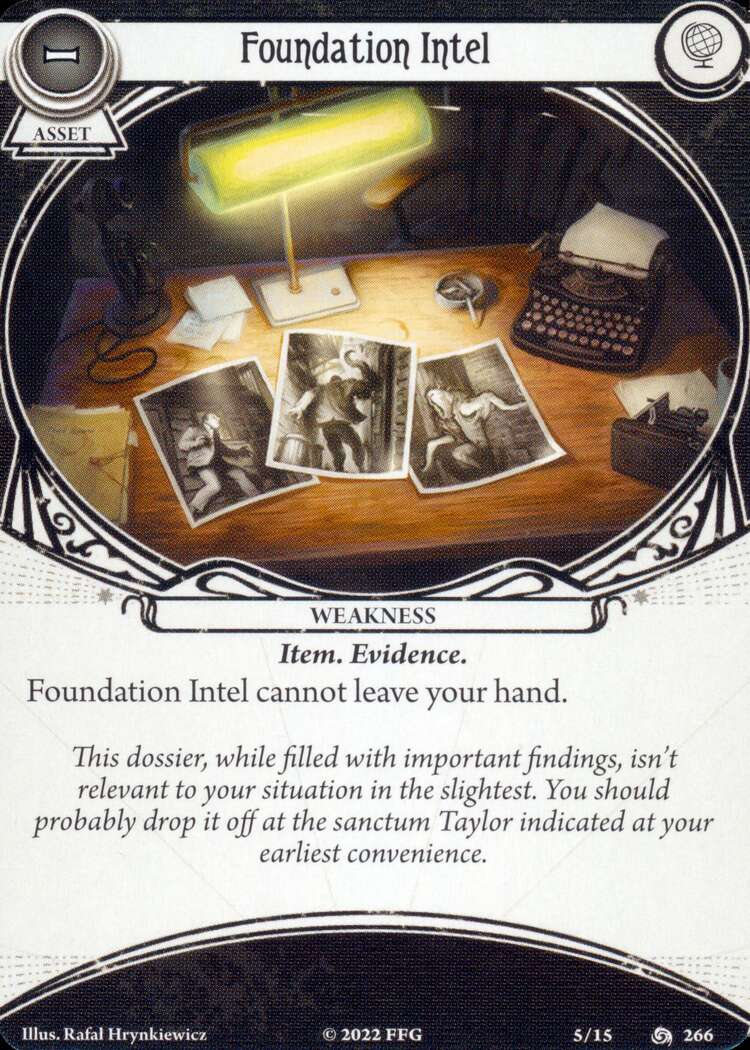This really messes up with Patrice, once you find this, you will draw 1 less card for the remainder of the scenario. 200CharactersMinimum 200CharactersMinimum 200CharactersMinimum 200CharactersMinimum
Asset. Weakness
Item. Evidence.
Cost: –.
Foundation Intel cannot leave your hand.

FAQs
No faqs yet for this card.
Reviews
This card is clearly a dead draw, as well as unhelpful hand clutter, but is is also an opening-hand killer, like The Tower • XVI? The Tower explicitly says that it has to stay in your opening hand:
"If The Tower • XVI is drawn in your opening hand during setup (before or after taking a mulligan), you cannot replace it. It must stay in your opening hand."
This direction overrides the general rule that you discard and replace weaknesses during the drawing of the opening hand without resolving them. But Foundation Intel is trickier. It just says flatly that it can't leave your hand. Is that text ever "resolved" (and thus ignorable according to the opening hand rule), or does is it just there? After all, it isn't part of a revelation or forced ability.
Overall, my best reading is that you CAN discard this card during opening hand draw. There's plenty of space on it for more text, so if the designers meant it to apply to that step, they could have easily said so. And since we have the example of the Tower as a card that must stay in your hand during opening hand draw, it seems likely (though hardly clear) that this card, which lacks the specialized text, also lacks the ability.